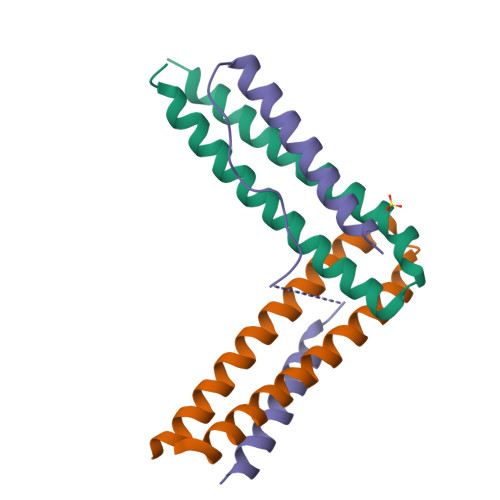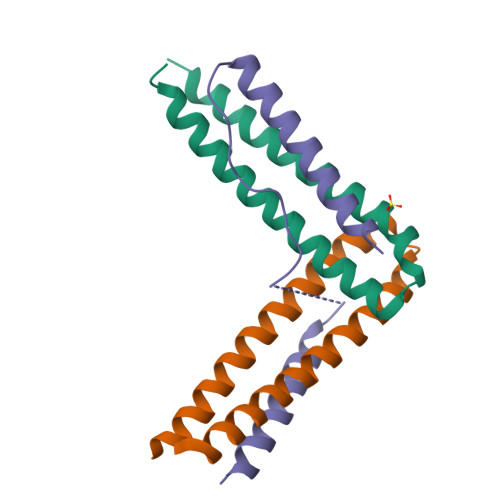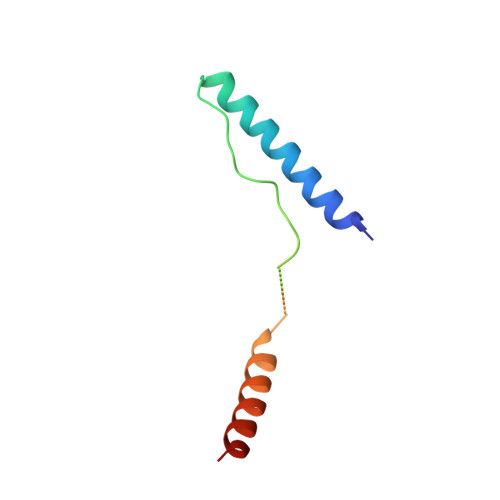Periphilin self-association underpins epigenetic silencing by the HUSH complex.
Prigozhin, D.M., Douse, C.H., Farleigh, L.E., Albecka, A., Tchasovnikarova, I.A., Timms, R.T., Oda, S.I., Adolf, F., Freund, S.M.V., Maslen, S., Lehner, P.J., Modis, Y.(2020) Nucleic Acids Res 48: 10313-10328
- PubMed: 32976585
- DOI: https://doi.org/10.1093/nar/gkaa785
- Primary Citation of Related Structures:
6SWG - PubMed Abstract:
Transcription of integrated DNA from viruses or transposable elements is tightly regulated to prevent pathogenesis. The Human Silencing Hub (HUSH), composed of Periphilin, TASOR and MPP8, silences transcriptionally active viral and endogenous transgenes. HUSH recruits effectors that alter the epigenetic landscape and chromatin structure, but how HUSH recognizes target loci and represses their expression remains unclear. We identify the physicochemical properties of Periphilin necessary for HUSH assembly and silencing. A disordered N-terminal domain (NTD) and structured C-terminal domain are essential for silencing. A crystal structure of the Periphilin-TASOR minimal core complex shows Periphilin forms an α-helical homodimer, bound by a single TASOR molecule. The NTD forms insoluble aggregates through an arginine/tyrosine-rich sequence reminiscent of low-complexity regions from self-associating RNA-binding proteins. Residues required for TASOR binding and aggregation were required for HUSH-dependent silencing and genome-wide deposition of repressive mark H3K9me3. The NTD was functionally complemented by low-complexity regions from certain RNA-binding proteins and proteins that form condensates or fibrils. Our work suggests the associative properties of Periphilin promote HUSH aggregation at target loci.
Organizational Affiliation:
Molecular Immunity Unit, Department of Medicine, University of Cambridge, MRC Laboratory of Molecular Biology, Cambridge CB2 0QH, UK.


















